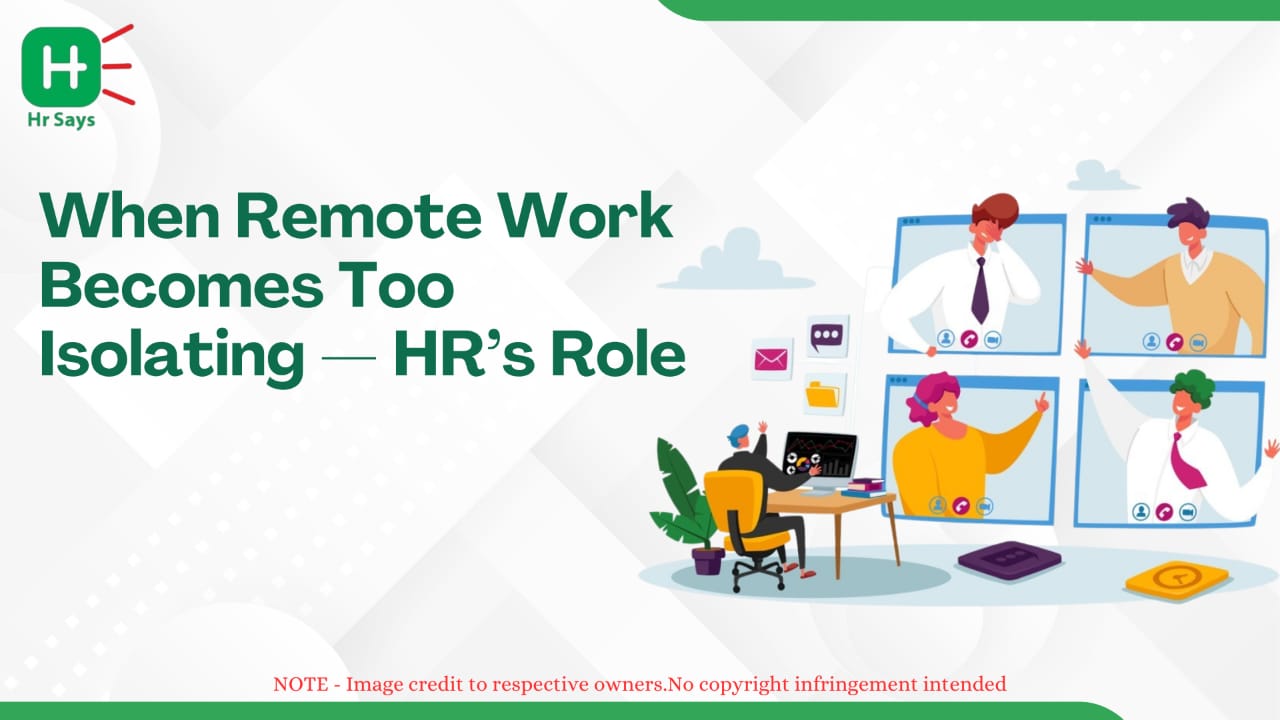Is teleworking increasingly becoming solitary work? What was once regarded as freedom started to make many of the employees feel alienated, un-heard and invisible. The isolation has emerged as a hidden menace that leaders of human resource departments cannot overlook as organizations implement the hybrid and remote arrangements.
The Hidden Side of Remote Work
Working remotely has propelled the meaning of flexibility and productivity. However, it has brought in emotional distance too. In the absence of un-formal tea breaks, hallway gossip, or staff lunches, employees will start to feel out of place. The top workers might face burnout, boredom or stress with time.
HR professionals play a key role in spotting these silent red flags. Virtual setups need more than tools—they need human connection. A remote workforce must feel seen, supported, and valued, even from miles away.
Recognizing Signs of Employee Isolation
Before creating solutions, HR must first learn to identify the patterns. Isolation rarely announces itself loudly—it shows up in subtle ways:
● Reduced participation in meetings or virtual events
● Missed deadlines or declining enthusiasm
● Withdrawal from informal team interactions
● Emotional fatigue or irritability
These are early indicators of poor employee engagement and mental exhaustion. Ignoring them can lead to low morale and high turnover, weakening organizational culture.
HR’s Human-Centered Approach
A strong HR strategy is no longer just about performance management—it’s about emotional management. Reconnecting remote employees requires empathy, consistent communication, and thoughtful engagement tactics. Some practical steps include:
● Encouraging regular check-ins: Not just to discuss tasks, but to understand well-being.
● Creating safe virtual spaces: Encourage honest conversations and peer support.
● Promoting work-life balance: Set healthy boundaries and respect downtime.
● Celebrating small wins: Recognition boosts morale and strengthens team bonds.
● Introducing wellness programs: Digital mindfulness sessions or team health challenges can re-energize isolated employees.
HR leaders must also train managers to notice changes in behavior, tone, or motivation. After all, human connection begins with genuine attention.
Rebuilding Connection and Trust
Trust is the currency of remote work. Employees need to know that their efforts matter and that they belong to something bigger than a task list. Transparent communication, inclusive decision-making, and fair recognition policies help rebuild that trust.
When HR focuses on people-first engagement, even remote environments can feel personal. It’s not about constant video calls—it’s about meaningful touchpoints that remind employees they’re valued.
The Future of Remote Culture
As digital workplaces evolve, HR will shape how connection survives through screens. The focus should shift from managing productivity to nurturing community. A well-connected remote culture encourages:
● Open communication across all levels
● Collaboration tools that support inclusion
● Recognition systems that celebrate contribution
In the long run, it’s not just about remote work—it’s about remote belonging.
Conclusion
Isolation in remote work is real, but not irreversible. HR departments hold the bridge between solitude and solidarity. With empathy, structure, and innovation, they can make virtual workplaces human again. Because at the heart of every organization, connection still matters most.

 Remote work often brings unseen loneliness and disengagement. HR’s role is to rebuild
connection
empathy-driven
strategies,
communication,
wellness
programs—ensuring employees feel valued and emotionally supported, even in virtual spaces.
Remote work often brings unseen loneliness and disengagement. HR’s role is to rebuild
connection
empathy-driven
strategies,
communication,
wellness
programs—ensuring employees feel valued and emotionally supported, even in virtual spaces. 












.jpeg)












.jpeg)